
Neo-Human
Designed by Jize Chen
Game Overview
The name of the game is Neo-Human. It’s an adventure and exploration role-playing linear storyline game, similar to famous games like The Last of Us, Final Fantasy, and Uncharted, where a fixed storyline is described, and the player is expected to follow a predetermined set of steps in a predetermined order. The advantage of this type of game is that you can better control the pace of the game and the emotional experience, which is suitable for my kind of game where the focus is on the narrative. However, some players may feel that the fixed flow limits freedom, so this game is aimed at players who enjoy storytelling and immersive experiences and is well-suited for newcomers and those with limited time. The overall flow of the game is relatively short, with fewer side quests and exploration. The main purpose is to give players a better focus on the development of the game’s story and turning points and enjoy a cinematic narrative experience.
Player Experience Goals
- Target Emotional Experiences:
- Loneliness and Awe: Highlight the protagonist’s solitude and wonder when exploring unknown planets and encountering the evolved Neo-humans.
- Tension and Survival: Introduce life-threatening challenges and create a sense of urgency during encounters with hostile Neo-humans.
- Reflection and Contemplation: Encourage players to reflect on the ethical and philosophical implications of the Neo-human experiment.
- Difficulty Curve:
- The game starts with simpler challenges to familiarize players with controls, progressing to more complex tasks such as stealth and resource management in later levels.
General Outline of the Game
The game is a 3D linear adventure game focusing on the main plot. Free-roaming expanded maps are less prominent, and most gameplay occurs from a second- or third-person perspective. The protagonist acts as an observer, traveling from planet to planet to explore the fates of genetically modified “Neo-humans.” The narrative explores how different planets influence these artificial humans’ evolution.
Storyline
The story opens with hundreds of babies flying off into space on rockets and naming the programme the Wandering New Baby Project. A total of seven rockets send these babies to eleven planets where these babies will survive on their own. Being the first humans to travel to an exoplanet will verify if survival is possible.
You, as the protagonist, are one of the participants in the project, and you are accompanied by your colleagues. These babies are not ordinary babies, they are laboratory-made neo-humans with far more adaptive capabilities than humans; whereas on Earth it took hundreds of millions of years for organisms to arrive at their current best-adapted form for survival, neo-humans are able to compress evolution into a lifetime or even a few decades of an average human. These babies will be able to evolve into the most adapted look for their local environment as they grow up, and they will evolve on each of these seven very different planets, and perhaps they will no longer be human.
You’re excited to be part of the project but your colleague feels sorry for the children, you remind him that these babies are nothing more than experiments, but he always thinks that they will still remember that they are human beings. Your colleague then pushes the button for the ship to take off and you set off on your journey.
You set off at the same time as the babies, but you can’t handle the speed of the colonisation rockets as ordinary humans, so when you reach the first planet, it’s officially ten years after the new babies have survived there. Your task is to observe their survival and help them if necessary.
You set off at the same time as the babies, but you can’t handle the speed of the colonisation rockets as ordinary humans, so when you reach the first planet, it’s officially ten years after the new babies have survived there. Your task is to observe their survival and help them if necessary.
You and your colleague wake up from your hibernation pods at the same time, as the ship slowly approaches the surface. From the ship; the planet has large areas of yellow land as well as a scattering of huge trees with trunks that reach into the clouds. You grab your gun and carry it with you, your colleague wonders if it is necessary to carry a gun when all we are seeing is a bunch of kids. I explained that in the reports of these planets, it shows that there are native creatures present, just in case. You put on your spacesuits and set foot on the land, there are strange shaped bugs crawling across the ground and animals fleeing in the distance in fear, the place looks like it’s full of life. You walk into the nearest tree, which has a hole in its trunk from which sap slowly flows. Your colleague is amazed that it looks like they actually survived on this planet. You walk along the trunk and soon find a door, outside of which you can hear human voices inside. Your colleague is just about to knock on the door when you immediately stop it; explaining that we can’t appear directly in front of them, that the new humans will do whatever it takes to evolve until they are at the top of the food chain, a process that must bring with it merciless killing, so what they will evolve into is anyone’s guess. But your colleague is still convinced that they will still be human, so you didn’t stop him again.
The door just opened you were stunned in place, because the child is not only not what he imagined, but unusually scary and frightening. Mouth exposed sharp teeth, more than two metres tall, fingers as sharp as spikes. Although you already know the uncertainty of evolution, seeing it for the first time still makes you very nervous. These new humans retain human features but are not human in any way. Your colleague boldly reaches out in a gesture of friendship, but unexpectedly the neo-human extends its sharp claws and slashes at your colleague, and you immediately pull him towards the ship. Immediately dozens of Neo-humans pour out of the hole in the tree behind you, and they keep hissing as your distance is quickly closed. You immediately pulled out your gun and fired several shots into the air, and while the neo-humans froze, you ran back to the airship.
The airship takes off immediately, and you keep it suspended in the air to observe. The new humans’ huge chest cavities rise and fall with them as they breathe, their respiratory systems changed to survive on a planet where oxygen is scarce. The hard, sharp claws not only easily slice through the trunks of trees to gain access to the sap, but also easily kill all native creatures that come near the large trees. The tree is the source of life on this planet, all creatures need to rely on it to survive, and there is no doubt that with the new humans in charge of the tree, they are at the top of the food chain.
You cheered at the sight of this, but your colleagues were not happy; but they turned into complete beasts and forgot that they were human. You explain that this is the only way they can survive, and isn’t that the purpose of our experiment. In terms of the experiment they were more successful than we thought, and you begin to look forward to the next 10 planets, and then the journey to the next one begins.
Planets 2 to 6 did not disappoint, some of the new humans grew legs to travel around the swampy worlds, others grew wings to fly freely over the mountainous planets. They‘ve all evolved to suit their local environments, and they’re all at the top of the food chain. But it‘s even sadder for my colleagues. None of them consider themselves human, and that’s just sad.
You then arrive at Planet 7, a planet that is half green and half white. The hatch opens, and in front of you several giant creatures the size of city walls and shaped like elephants are moving quickly through the grasslands while eating plants. You began to look for the new human figures, expecting it to be as easy as before, but this was the hardest one yet. You even found the wreckage of the colony ship, but a week after that there were still no new humans to be found. You couldn’t help but wonder if they hadn’t survived, but then you found a stone slab with a humanoid design carved into it, the engraving was very fresh. This inspires your confidence, but another week passes and still nothing. You didn’t find any new humans, but you learnt that the planet is half green and half white because of the huge temperature difference, where the sun shines there are green plants, while the dark side of the planet is a lifeless white at 100 degrees below zero. Plants grow quickly in the morning and are crushed by the cold at night. The planet’s creatures can’t withstand the cold temperatures, so they have to constantly run after the sun and stay in sunny places to survive. You wonder how the new humans can outrun the planet’s rotation, but then you look at the tablet and suddenly have a bold idea. You have the ship lift off and scan the behemoths from the inside out, and when the scans come back you see a shocking sight. There are several creeping, writhing figures right in the bowels of the behemoths; the new humans have become parasites. Wide places can bend and stand, narrow places can only rely on wriggling, but even in such a narrow space, you still see spaces such as the canteen and bedrooms. You observed for a week and found that even when the behemoth died, its residual body heat still allowed the new humans to escape the night’s storm and last until the next day when they were replaced by a new behemoth. These behemoths are the masters of the planet, and the new humans are the masters of the behemoths. You are still in awe until the ship leaves the planet.
Then planets 8 and 9, you witnessed once again the possibility of evolution. You and your colleague awoke from the dormant chamber and arrived on Planet 10. It is an extremely dark planet, with clouds in the sky covering everything. The cabin opens up to pure blackness, and the light from the flashlight shines out and is swallowed up. You’ve been there for a week, and you’ve realised that it’s always dark at all times. And you still haven’t seen the new humans, and you begin to figure out how to draw them in. What would the new humans evolve into in a world where total darkness vision is useless. Their sense of hearing is probably well developed, and you have the engines making a constant noise. After a couple of hours there is still nothing, and I’m about to give up when I turn my head and a couple of creepy figures are crawling around outside the ship. There’s no telling how long they’ve been there, and they move without a sound, so much so that you’re just now realising it. They don’t react when you shine a torch at them, but when you stomp your feet they are instantly alerted.
They are thinner than a human, with nothing where their eyes would be, and ears half the size of their face. You have to observe them, so one of you has to go down, but they stay down here and you can’t observe them, so you plan to switch off the engine. You offer to let your colleague stay on board in case you can’t find your way, and your colleague can save you. Switching off the engines, the new humans gradually leave, and since they have completely abandoned their vision, you can safely follow them with your lights on. You follow them to a clearing, which is densely populated with Neo-humans who stand like statues. Suddenly you hear something in the distance, and instantly all the Neo-humans scurry out, followed only by the sound of biting, and in less than a minute the creature is consumed. It was like a dark forest, and the Neo-humans could reproduce so many people that you believed they were at the top of the food chain.
You were ready to head to the ship, you were so nervous having just witnessed that scene with a creature that you didn’t notice stepping on a stone. By the time you turn around the pair of ears have all turned towards you. The neo-humans are running towards you like crazy, you can already smell the stench coming from them. Suddenly your colleague flies overhead in his spaceship, thus attracting their attention and you escape. You ask snidely I thought you thought they were kind and wouldn’t hurt me as one of their own kind. Your colleague says that I’ve given up that illusion, they are like humans and monkeys long since ceased to be a species.
You have finally arrived at the last planet, Planet 11. The ship’s cabin opens up to a dim yellow earth outside, and you are trying to find the New Humans when you are met with an unbelievable sight. The New Humans have come to greet you, and your colleagues are amazed because the New Humans on this planet look exactly like normal humans. The new human extends his hand and says hello, and after seeing so many strange new humans, it suddenly seems bizarre to see such a normal-looking one instead. You hesitate in place for a long time before finally extending your hand. The moment you shake your hand all your doubts disappear, despite growing up in a completely different environment, the familiar touch and warmth makes you sure they are human. Your colleague is thrilled by the scene and we all agree that they are the most important discovery of the experiment.
The new humans turn around and gesture for you to follow, as you walk you ask, are you at the top of the food chain yet. Of course, we already own this. The new humans on the previous 10 planets have evolved to adapt to their environment in order to reach the top of the food chain, but you have evolved in the exact same direction as humans, why is that. The colleague said excitedly; is it on the same path of winning by intelligence and tools as humans. The new human shook his head, not really, it is to hide and lower the enemy’s defence, use this appearance to hide among the enemy, and then kill them by surprise. You are puzzled when the other stops and points to the colony ship in front of you, the one you came from. But immediately after you see the view behind the ship and suddenly shudder. The new human’s smile is as terrifying as an evil spirit in your eyes.
Colleague asks what’s wrong. You shudder as you tell the truth; the launch of Spaceship 11 was a failure, and instead of flying out into the cosmos, it fell back to Earth.
Key narrative beats:
- Introduction: The start of the Wanderer New Baby project and the departure of the protagonist from Earth.
- Planet 1: The protagonist witnesses the New Humans occupying the tree ecosystem on their planet with their sharp claws and towering bodies.
- Planet 7: The New Humans evolve into parasites that parasitise giant creatures in order to adapt to extreme temperature changes.
- Planet 10: In complete darkness, the New Humans lose their eyesight and evolve super-sensitive hearing, enabling them to hunt their prey with precision.
- Planet 11: The New Humans on the last planet look human and welcome the protagonist. However, a creepy twist reveals that they crash-landed on Earth due to a malfunction in their spaceship and that their ‘human’ appearance is just a disguise for predators. Their landing site is Earth, which is now ruled by the New Humans, who have eliminated most of the human population to take the top of the food chain.
Simple game flowchart
- Here is a simple flowchart of the first chapter of the game, from the start of the game to the exploration of the first planet.
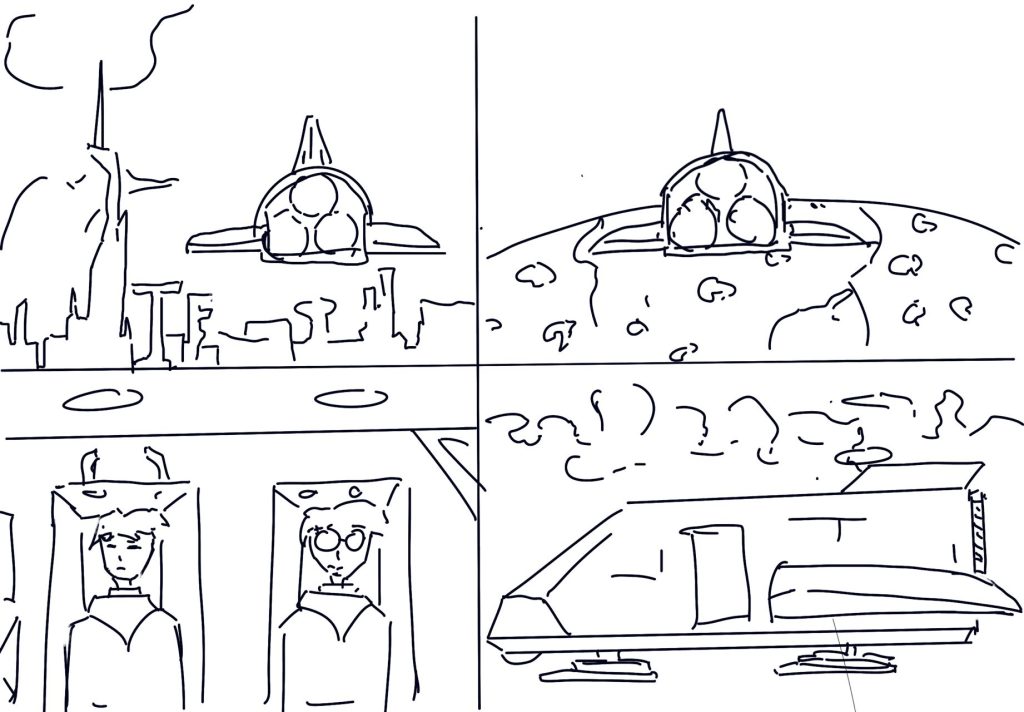
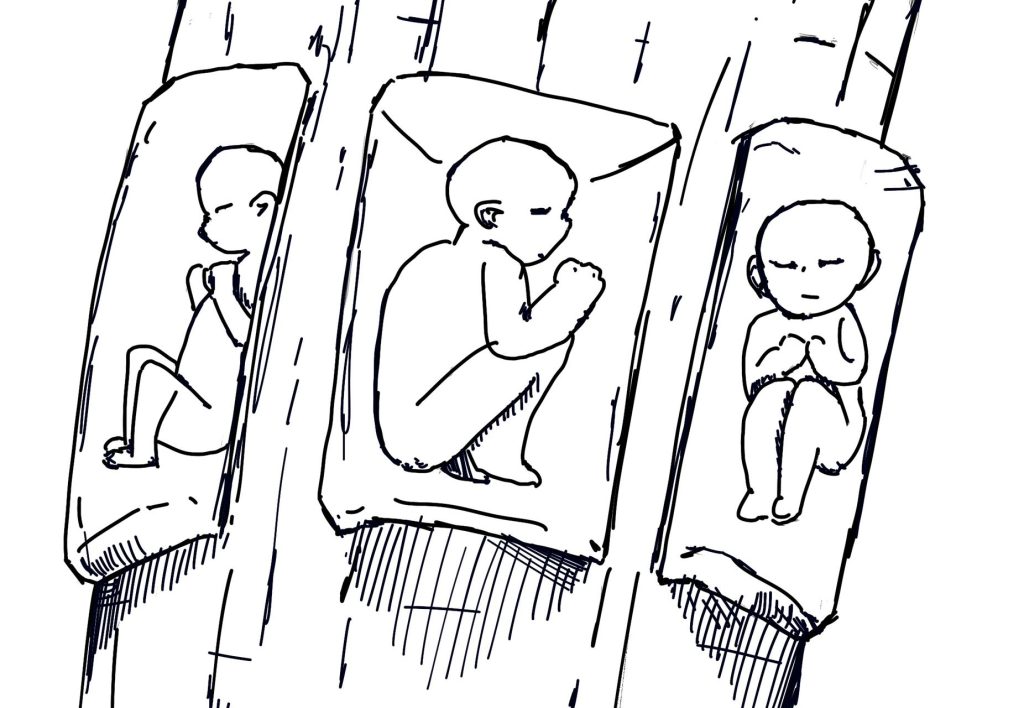
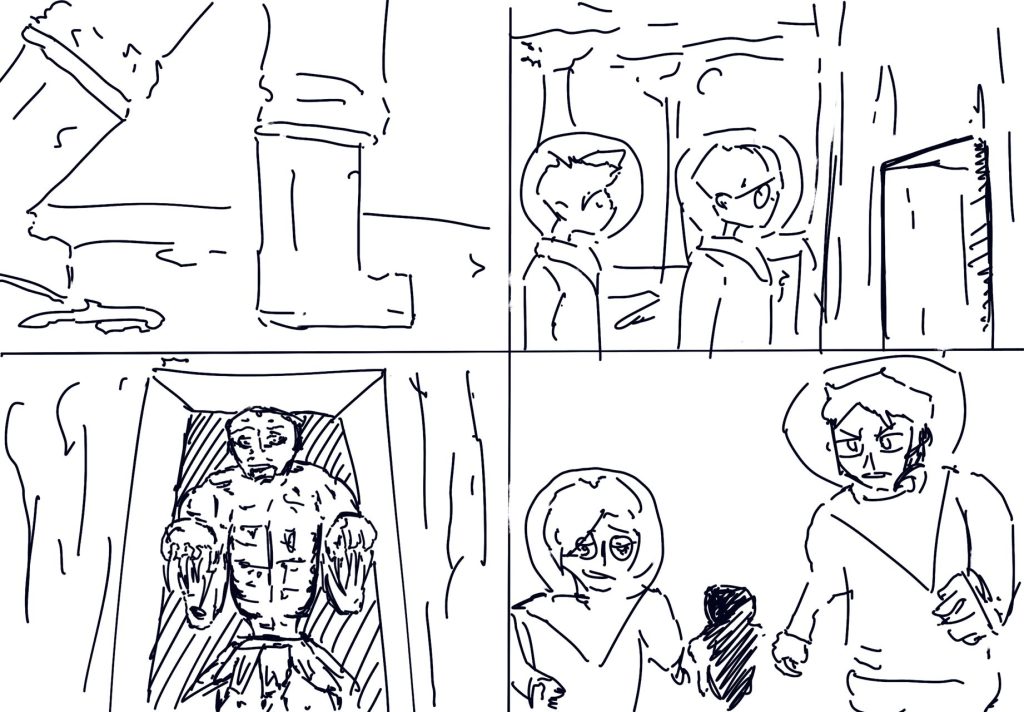
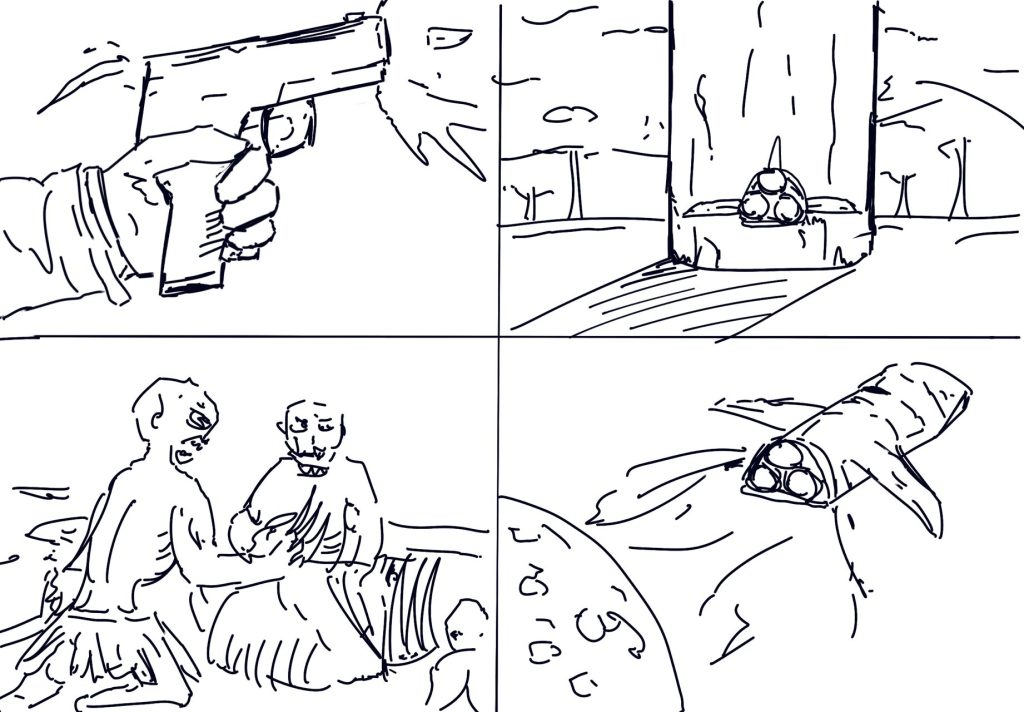
Expanded World-Building
- Timeline:
- Set in the 22nd century, humanity faces ecological collapse, necessitating experiments like the Neo-human project to ensure survival.
- Planet Selection:
- Each planet represents a unique ecological challenge—extreme gravity, hostile atmospheres, or environmental cycles—chosen to test Neo-humans’ adaptability.
- Ethical Debate:
- Earth’s public is divided: proponents view Neo-humans as the future of humanity, while critics argue the program crosses moral boundaries.
- Certain factions on Earth actively oppose the project, introducing potential for sabotage or external interference in future expansions or sequels.
Game Mechanics
- Resource Management:
- Players must manage limited ship resources like oxygen and fuel. Gathering materials on planets is crucial but risky.
- Introduce a crafting system where players can use gathered resources to upgrade equipment or create temporary survival tools (e.g., oxygen filters, energy packs).
- Choices and Consequences:
- While largely linear, some micro-decisions (e.g., helping or ignoring a Neo-human) provide narrative depth and emotional weight.
- Certain choices may temporarily change the behavior of Neo-humans, such as showing aggression or neutrality based on player actions.
- Environmental Interaction:
- Players can analyze flora and fauna, interact with objects for clues, and use the environment for stealth or combat advantages.
- Introduce environmental hazards, such as toxic gas clouds or collapsing terrain, to increase difficulty and immersion.
- Allow the use of drones to explore dangerous areas remotely, adding layers of strategy to exploration.
- Stealth and Evasion:
- Introduce stealth gameplay where players must avoid detection by Neo-humans or native predators. Noise levels, light exposure, and timing play a critical role.
- Add tools like sound emitters or holographic decoys to distract enemies, providing players with tactical options.
- Sensor and Scanning Mechanisms:
- Equip the player’s ship and suit with advanced scanning tools, such as thermal imaging, motion detection, and bio-scanners. These tools can be upgraded for enhanced functionality.
- Scanning devices can also be used to uncover hidden clues or weak points in the environment.
- Player Progression:
- Introduce a skill-based progression system where players unlock abilities such as faster scanning, quieter movement, or resource conservation as they complete missions.
Mission Design
- Primary Objectives:
- Observe and document Neo-human survival on each planet.
- Survive hostile environments and avoid direct conflict with evolved Neo-humans.
- Side Quests:
- Collect artifacts or biological samples that provide additional lore.
- Investigate crashed equipment or hidden messages left by previous explorers.
- Introduce dynamic side quests triggered by environmental factors, such as rescuing a stranded drone or solving a local ecosystem disturbance.
- Dynamic Mission Elements:
- Timed Events: Missions where the player must complete objectives within a certain time frame, such as escaping a collapsing cave or repairing a damaged system before resources run out.
- Branching Objectives: Include missions with optional sub-tasks that influence how the story unfolds, such as gathering additional data to unlock hidden knowledge or taking risks to assist struggling Neo-humans.
- Puzzle Integration:
- Add puzzles that require players to analyze environmental clues or use scanning tools to solve problems, such as deciphering ancient symbols or calibrating machinery.
Key Roles and Characters
- Protagonist (Observer 1):
- A cautious, realistic scientist with deep knowledge of Neo-human biology. Haunted by ethical doubts about the project.
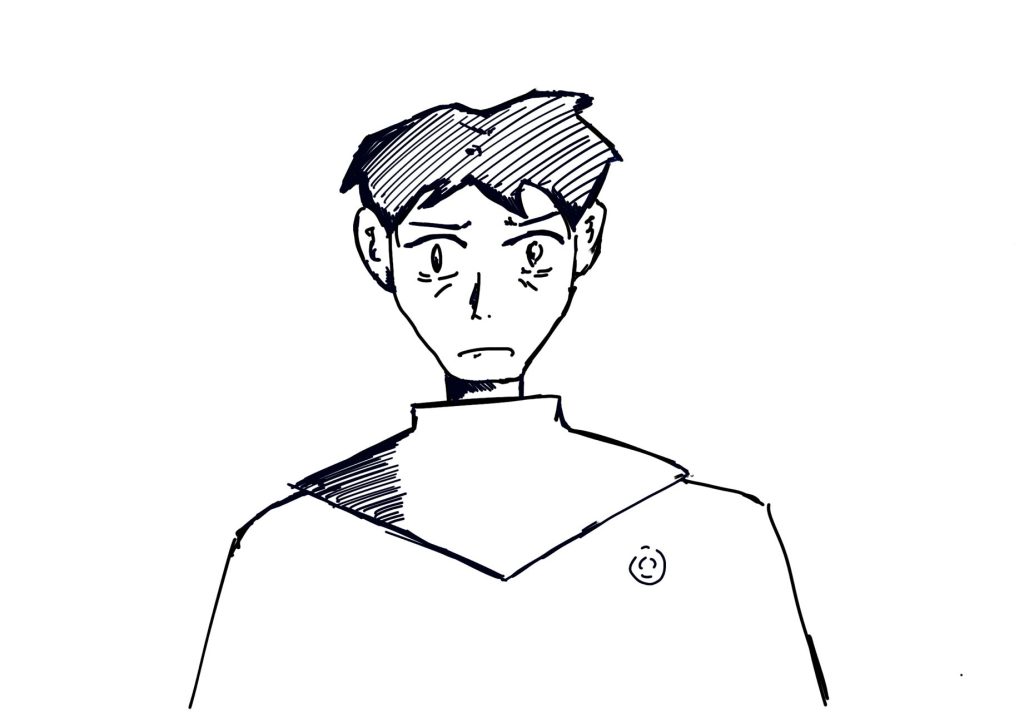
- Colleague (Observer 2):
- An optimistic, idealistic assistant who becomes increasingly disillusioned with the experiment’s results.

- Neo-Humans:
- Each planet introduces unique Neo-human forms, from predatory tree-dwellers to parasitic beings living inside giant hosts.
- Introduce subtle behavioral traits, such as territorial patterns or group dynamics, to make encounters more realistic.
- Add personality distinctions among Neo-Humans, such as a leader figure in their groups or a lone hunter archetype, to diversify interactions.

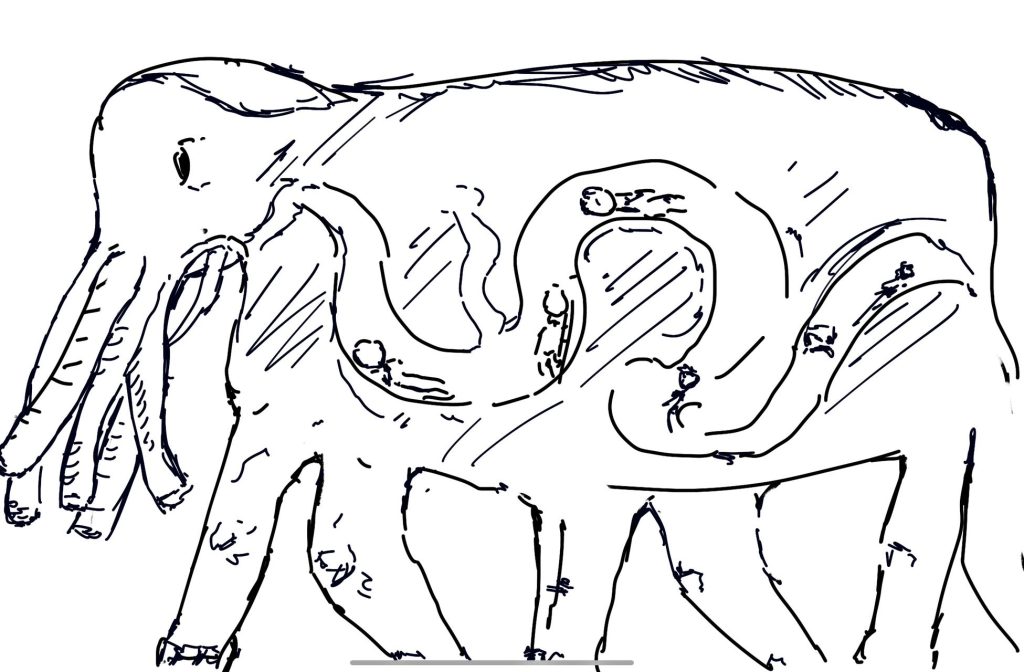
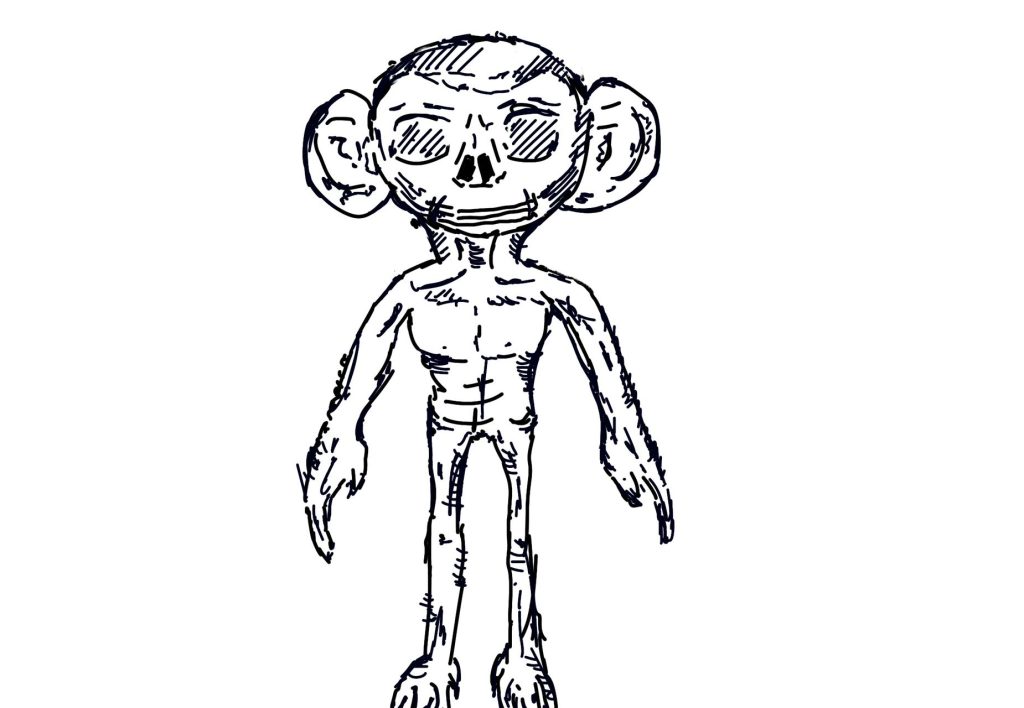
Scenes and Planets
- Planet 1: A barren world with massive trees sustaining Neo-humans who have sharp claws and towering frames.
- Unique Element: Introduce dynamic weather, such as sudden dust storms that obscure vision and increase difficulty.
- Visual Description: Yellow, arid land with enormous trees stretching into the sky. Their trunks ooze with sap, and strange insects scuttle across the ground. Neo-humans with sharp claws dominate the ecosystem.
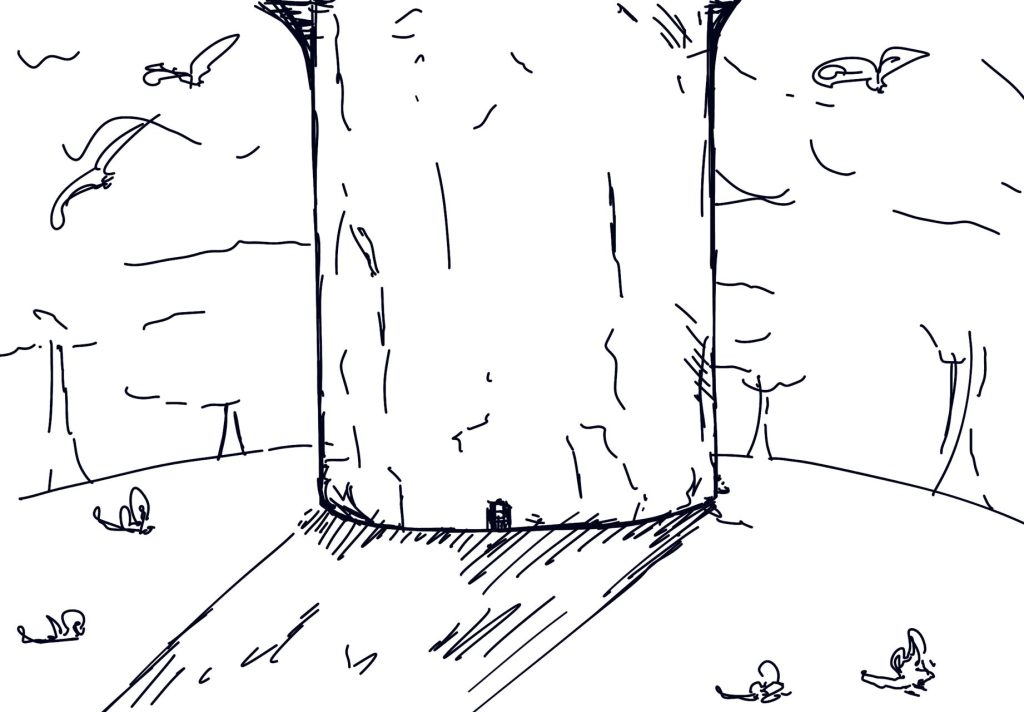
- Planet 7: A temperature-divided world where Neo-humans live as parasites within massive creatures.
- Unique Element: Players must track Neo-human movements using infrared scanners to avoid ambushes.
- Visual Description: Half lush green grassland bathed in sunlight, half icy white wasteland in shadow. Gigantic elephant-like creatures roam, with Neo-humans parasitically inhabiting their bodies.
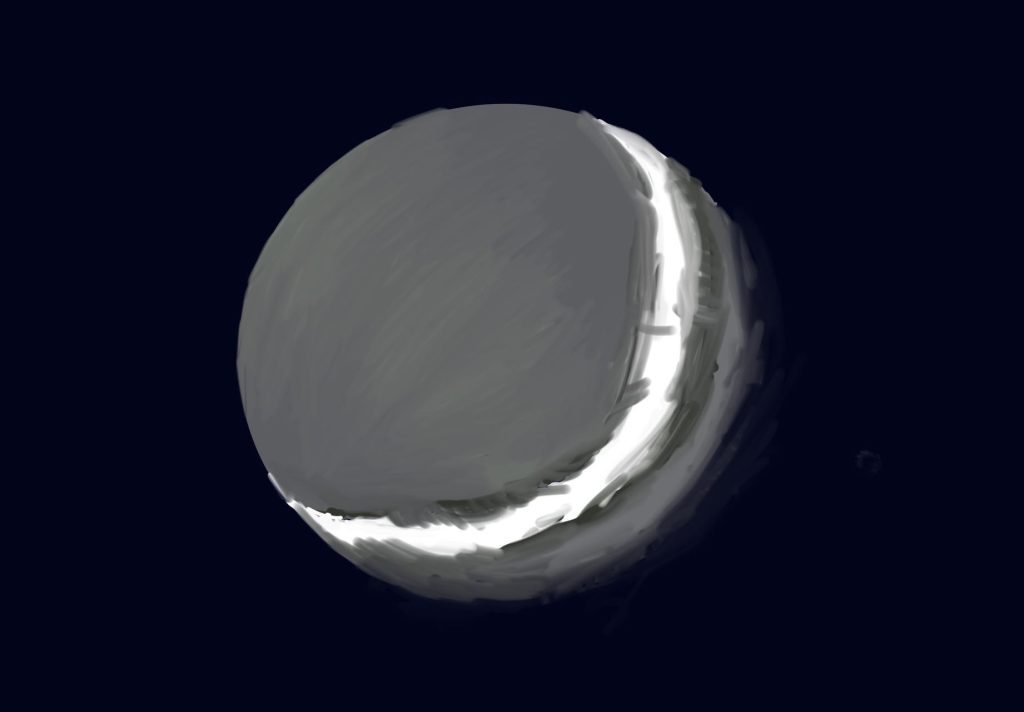
- Planet 10: A perpetually dark world where Neo-humans rely on hearing, hunting with eerie precision.
- Unique Element: Introduce sound-based puzzles where players must manipulate noise levels to progress.
- Visual Description: Pitch-black terrain with dim light from the protagonist’s flashlight. Neo-humans with no eyes and oversized ears creep silently, relying on sound to navigate.
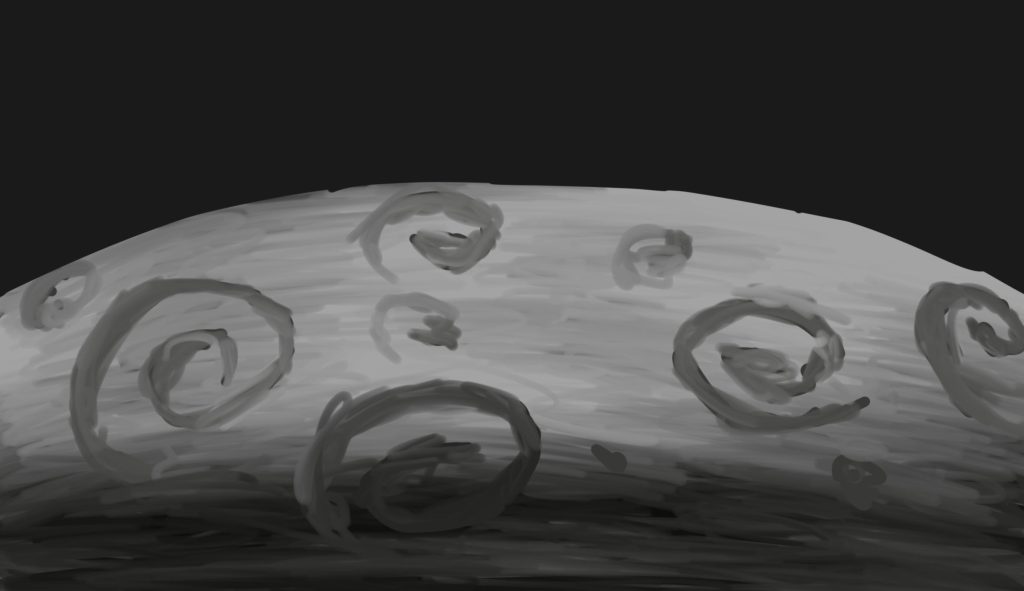
- Planet 11: A yellow-hued wasteland revealing Neo-humans that appear fully human, hiding their predatory nature.
- Unique Element: Allow limited dialogue interactions with Neo-humans to deepen the narrative mystery.
- Visual Description: Sparse vegetation, crumbling structures with a distorted, alien feel. Neo-humans look completely human but exude an unsettling aura of hidden menace.
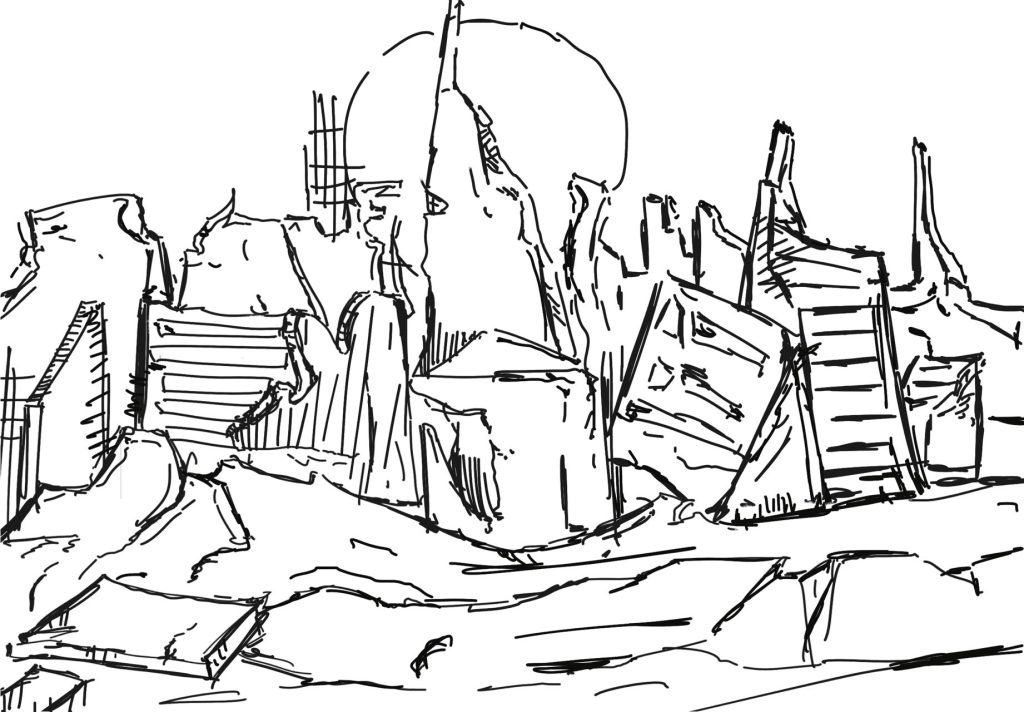
Art and Sound Design
- Music within games usually needs to be tied to different storylines, atmospheres and player emotions. Here are a few types of music that can occur.
- Story-driven emotional music: emotionally rendered music such as symphonies, piano and violin pieces can be chosen to enhance the immersion in the story. This type of music can be added at key plot points, or low instruments can be used to create tension. For example, this type of music can be used when the first discovery of the Neo-humans’ lifestyle is made, or at the end of the story when the Neo-humans tell the protagonist the truth. For example, in the game The Last of Us, a simple guitar melody conveys a deep sense of emotion and loneliness to the player.
- Tense and exciting action music: choose fast-paced orchestral, electronic or percussive music, suitable for the rhythmic sense of the battle scenes, to bring the player a sense of tension and excitement. It can be used in the scene where the game is being chased by the new humans, and the rhythmic sound becomes faster and louder when the new humans are close to the player, creating a tense atmosphere for the player.
- Mysterious or fantasy ambient music: commonly used ethereal synthesizers, orchestral or choral music, bringing a sense of mystery and exploration, suitable for depicting fantasy or supernatural scenes. This can occur, for example, when the player arrives on a new planet for the first time, sees a new planet they’ve never seen before, or when the player encounters unfathomable physiological phenomena and sees a human being turn into a parasite. Create a mysterious sci-fi atmosphere for the player.
- Visual Style:
- Realistic, atmospheric sci-fi visuals blending futuristic technology with alien natural environments.
- Music:
- Emotional orchestral pieces for story-driven moments.
- Tense, percussive tracks for chase and combat scenes.
- Ethereal ambient sounds for exploration and mystery.
- Sound Effects:
- Unique ambient sounds for each planet (e.g., wind, creature calls, or eerie silence).
- Neo-humans’ vocalizations designed to evoke tension.
- Dynamic soundscapes that react to player actions, such as increased tempo during tense moments.
Technical Features
- Platform Optimization:
- Targeting PC and next-gen consoles, with potential cloud gaming support.
- Advanced AI:
- Adaptive AI for Neo-humans, creating realistic predator-prey dynamics.
- Introduce AI learning systems where Neo-humans adapt to repeated player tactics.
- Dynamic Lighting:
- Essential for dark environments like Planet 10.
- Add flickering or malfunctioning light sources to heighten tension in certain areas.
Testing and Feedback
- Alpha Testing:
- Focus on gameplay mechanics and resource balancing.
- Include stress tests for environmental hazards and AI adaptability.
- Beta Testing:
- Evaluate narrative pacing, difficulty curve, and emotional impact.
- Feedback Collection:
- Player surveys and gameplay analytics to fine-tune mechanics and storytelling.
- Observe player reactions to twists and ethical dilemmas for narrative adjustments.
Endings
The game features two distinct endings, both centering around the realization that the Neo-humans have taken over Earth and humanity is on the brink of extinction. The ending achieved depends on the player’s decisions and actions throughout the game:
- Neo-Human Supremacy:
- Conditions:
- Avoid completing side quests or fail to gather critical data about Neo-human weaknesses.
- Engage in few or no proactive actions to challenge Neo-human dominance.
- Follow a largely passive approach, focusing only on observation.
- Narrative Outcome:
- The protagonist and their colleague discover that Neo-humans have exterminated the majority of humanity and established themselves at the top of the food chain. As the Neo-humans “welcome” the protagonists, it becomes clear that resistance is futile. The game ends with the protagonist left powerless, witnessing the new world order ruled by Neo-humans.
2. Resist the spark:
- Conditions:
- Complete the key side quest to discover the weaknesses of the new humans and collect key scientific data.
- Use the resources and tools collected to actively resist the invasion of the new humans.
- Support your colleagues in discovering and exploiting the weaknesses of the new humans.
- Narrative outcome:
- The protagonist and his colleagues successfully discover a critical weakness in the biology of the new humans. Using this knowledge, they initiate a secret operation to pass on the information to the hidden human base. The game ends on a bittersweet note as the humans begin to organise themselves to resist the new humans. Although victory is still far away, the spark of resistance brings hope for the future of the human race.